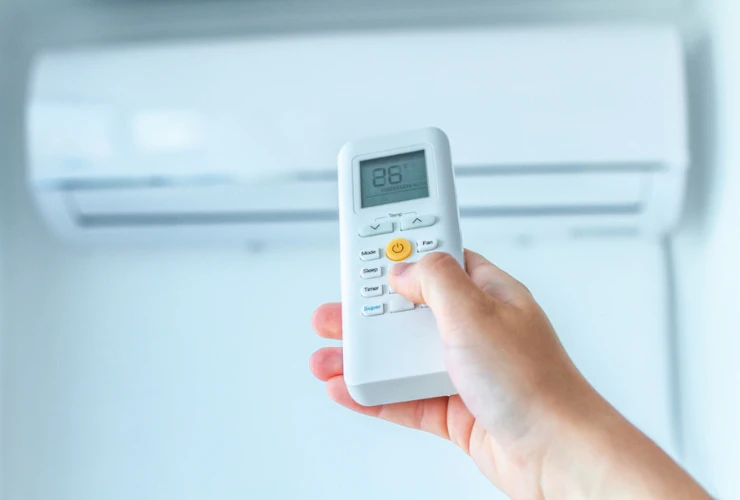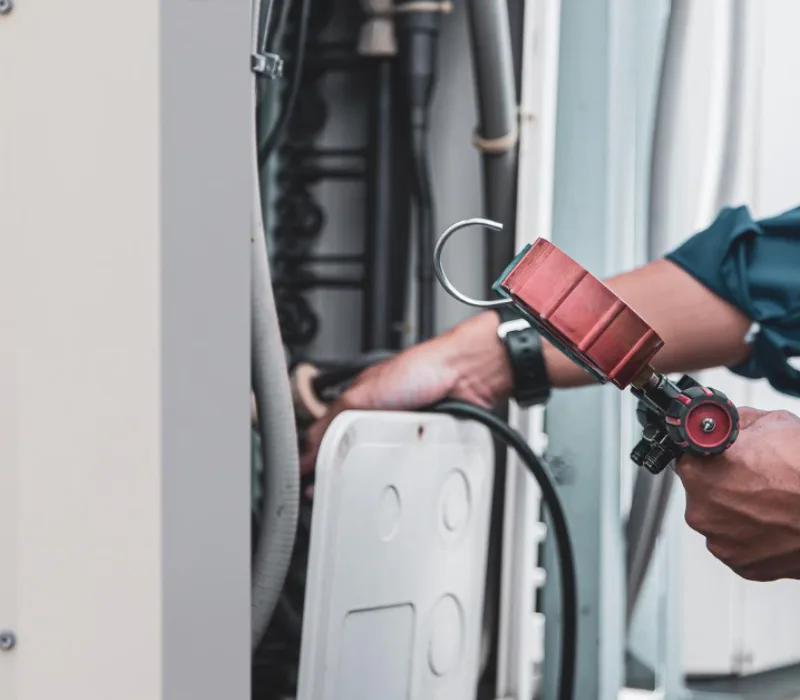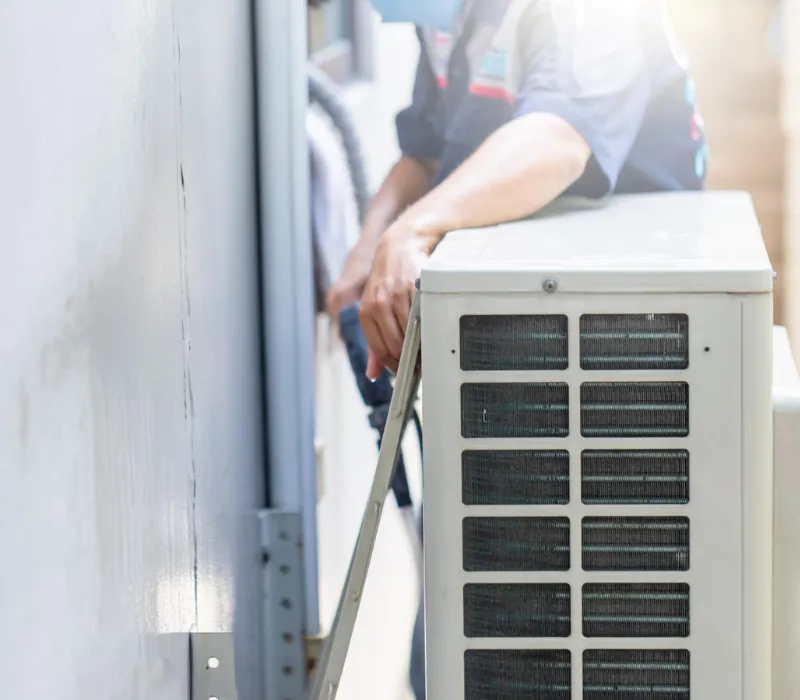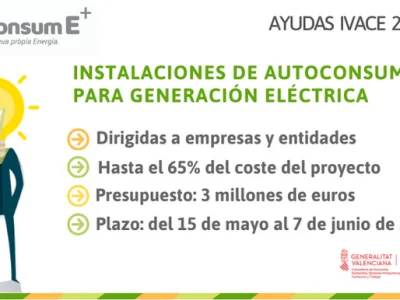Air source heat pumps (ASHPs) are among the most energy-efficient technologies for heating and cooling buildings but, as any other installation, it is subject to several regulations to ensure safety, efficiency and minimal disturbances.
These regulations vary depending on the country or even the city, so it is important to make sure you understand them and work with installers that comply with them. In this post, we will focus on the regulations that apply in Spain and particularly in the Ibiza area.
If, after reading this post you still have doubts, we assess your property to ensure full legal compliance.
Are Air Source Heat Pumps Regulated by Building Codes?
The answer is yes, air source heat pumps are regulated by building codes, such as other heating and cooling systems.
Planning Permission and National Standards
In Spain, the Código Técnico de la Edificación (CTE DB-HE) ensures that new and renovated buildings achieve low energy consumption to comply with Spain’s and the EU’s decarbonization targets.
Additionally, systems that provide heating or cooling in buildings must meet the requirements of the Reglamento de Instalaciones Térmicas en los Edificios (RITE) for design, commissioning, and maintenance.
In addition, municipal urban planning regulations apply, which must be checked with each council and may vary slightly from one municipality to another. For example, in the island of Ibiza, regulations are different in Santa Eulària, Sant Josep or Eivissa.
Finally, it is important to review the building’s regulations or those applying to the residential complex, in case they apply.
When a Building Permit Is Required (and When It’s Not)
A building permit (or licencia de obra menor) may be required by the local council in some cases, for example if the installation involves structural modifications, visible external units, or work in protected or historic areas. Sometimes a declaración responsable, a different type of permit, can be enough. In any case, taxes might apply.

Key Air Source Heat Pump Installation Requirements
Which are the requirements to install an air source heat pump?
Minimum Clearance and Placement Rules
Correct placement of the external unit is critical for efficiency, airflow, and safety. Manufacturers typically require from 30 to 50 cm clearance on the unit sides and rear for airflow and at least 1 meter of unobstructed space in front of the fan. A minimum height from the ground is required to allow condensate drainage and prevent obstruction by snow or debris.
In Spain and the Balearic Islands local councils (Ayuntamientos) may impose additional setbacks from property boundaries to reduce visual and acoustic impact.
Noise Limits and Proximity to Neighbours
Noise is one of the main regulatory concerns for ASHPs. In Spain, the maximum noise level allowed varies by municipality, but residential zones often limit continuous noise levels to around 40 dB(A) during daytime and 35 dB(A) at night.
A correct installation, using low noise heat pumps, anti-vibration mounts, and careful orientation of the fan outlet away from neighbors can help achieve compliance.
Access for Maintenance and Ventilation Considerations
The external unit must be easily reachable without scaffolding or unsafe work at height in any case, in order to maintain it properly.
Electrical and Safety Requirements for Installation
Electrical and safety requirements are also crucial when installing ASHPs.
Dedicated Circuits and Grounding Rules
ASHPs draw significant electrical current. In Spain, installations fall under the Reglamento Electrotécnico de Baja Tensión (REBT), which mandates proper grounding, cable sizing, and protection devices against short circuits and overcurrent.
Inverter Type and Grid Connection Permissions
Modern systems often use inverter heat pumps that modulate compressor speed for higher efficiency and quieter operation. When connected to the grid, installers must ensure compliance with national and local grid connection rules.
Compliance with Local Utility Guidelines
Utility companies may impose additional conditions regarding metering, load management, and backup heating systems. In some cases, specific permits or inspection certificates must be submitted before commissioning the system. Always verify compatibility with local utility guidelines before connecting the ASHP to the electrical network.

Special Requirements for Installations in Ibiza and Spain
What Local Regulations Apply in the Balearic Islands
In Ibiza and the Balearic Islands, air source heat pump installations are governed by state Spanish legislation but enforced locally through the Consell d’Eivissa and municipalities.
Projects must meet CTE DB-HE for energy performance, RITE for thermal installations, REBT for electrical safety, local urban planning regulations, and building or residential complex’s rules.
Grants and subsidies: minimum technical requirements
Under the Next Generation EU funds homeowners can apply for aerothermal subsidies. To qualify, installations must:
- Use certified, high-efficiency inverter heat pumps (minimum seasonal COP defined by IDAE).
- Be installed by registered RITE and REBT-certified professionals.
- Meet minimum energy performance and noise reduction standards specified in the grant guidelines.
Proper documentation, including invoices, commissioning certificates, and a valid Certificación Energética (CEE) is mandatory to receive the subsidy.
Registered Installer Requirements and Certificates (REBT)
In Spain, only installers registered under REBT (for electrical work) and RITE (for thermal systems) can legally install and certify ASHP systems.
Upon completion, they must issue the proper certificates, Boletín Eléctrico and Certificado de Instalación Térmica, which are required for utility registration and subsidy applications.
Final Checklist Before Installing a Heat Pump System
Before installation, verify that you have:
- Planning or municipal approval.
- A qualified and certified installer.
- Proper unit placement meeting clearance, drainage, and noise requirements.
- Electrical compliance.
- Adequate access for maintenance and proper ventilation.
- Noise mitigation measures (anti-vibration mounts, orientation).
- Energy and safety certificates ready for subsidy or compliance submission.
If you want to make sure you meet all requirements, our team handles both the technical and regulatory aspects.







